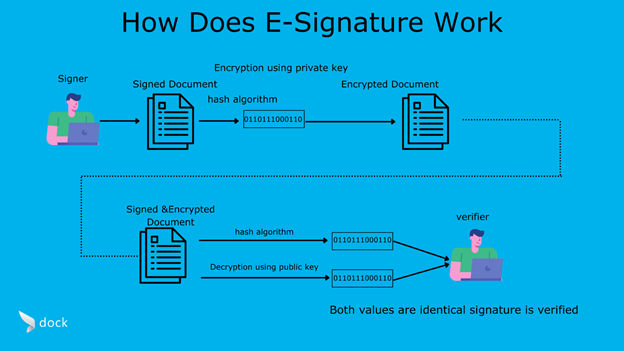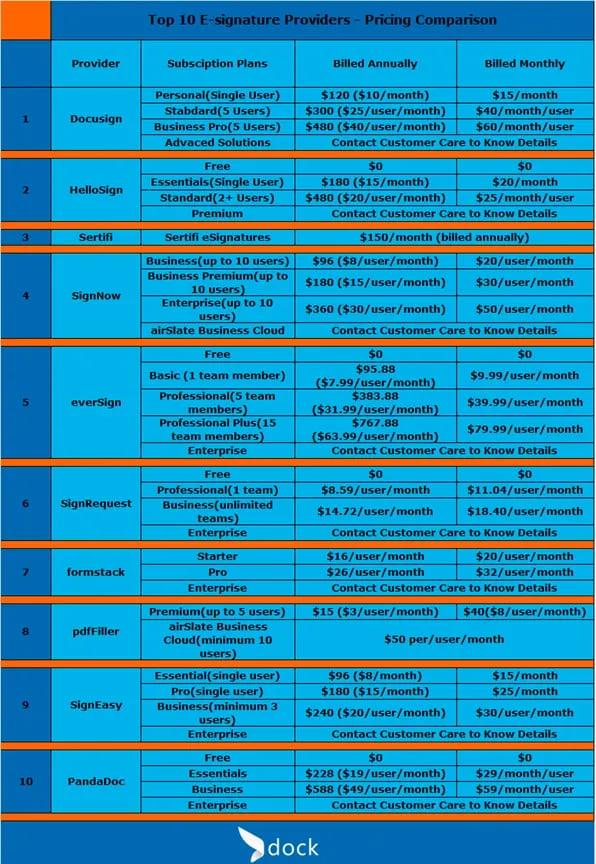
What Makes an Electronic Signature Legally Binding?
Using electronic signatures is an internationally recognized standard practice due to the simplicity and speed this signing method provides. E-signatures are legally binding – but how and why? As a business professional, it’s important to stay informed of the latest trends in technology so you can continue to up-level and revolutionize your business.
The majority of organizations today use the internet for a significant amount of business dealings. E-signatures are broadly used for contracts, legal agreements, and other documents containing critical information. There are laws in-place globally that govern the legal implications of e-signatures.

Are you interested in learning how and why e-signatures are legally binding? Let’s discuss in more detail below.
Topics-
- What is an e-signature?
- What makes an e-signature legally binding?
- Intent to sign
- Consent to sign
- Signature validation with audit trails
- Security of signature
- Copy of document provided to signer
- E-signed document retention
- Option to opt out of signing electronically
- Identification of signing parties
- Electronically-capable signature capture
What is an e-signature?
Electronic signatures are signatures captured on mobile devices or computers by typing or drawing your personal signature onto a screen. An e-signature is placed onto an electronic contract, agreement, or document. By leveraging the features and capabilities of e-signature technologies, your business’s contract management processes can be supported and streamlined in multiple ways.
Using an e-signature instead of a traditional, physical signature is very efficient and more accessible for each party involved in a contract or agreement. Today, there are many several electronic signature solutions to explore that will provide you with all you need to decrease turnaround times during this critical step in the contract lifecycle management process. Having a more efficient and more effective process will give your company the edge against your competitors, increasing the value of your product overall.
Implement the best e-signature software so you can increase the speed and productivity of your contract lifecycle management system today. E-signature is the way to go because its manual, in-person alternative can be time-inefficient. When a physical contract is signed, it’s important to consider the next steps – shipping, scanning, etc. In this manner, it’s evident that an electronic signature solution is certainly more time-efficient and cost-efficient.
What makes an e-signature legally binding?
Electronic signatures are a great way to increase the speed and efficiency of contract lifecycles within your contract management system. Consider the following factors that make electronic signatures legally binding:
Intent to sign
E-signatures are only legal if the document is transparent, and if the signer has intent to provide their signature so the agreement can be executed. With various e-signature software, the signer might draw their signature, click a check box, or type in their name. The main idea is that the signer must show clear intent for signature.
Consent to sign
Electronic signature software must include a clause stating that the signer consents to provide their electronic signature. The signer must be fully aware of the legal implications of providing an electronic signature and should be given the choice to opt out if desired.
Signature validation with audit trails
Is simply typing my name into a document sufficient in a court of law? The answer here is most certainly yes – your typed name constitutes a signature. This is because your signature can be tracked with digital audit trails.
An audit trail will include specific details including IP addresses, timestamps, signed certificates, contract copies, and email addresses. Signature audit trails accompany signed documents, providing electronic signatures with a layer of legal validity. Audit trails monitor who takes what action and when, so that details regarding the electronic signature are fully visible and transparent.
Security of signature
When using electronic signature software, it is essential that every e-signature is captured securely within its corresponding document. With encryption and cloud storage features, signed files can be safely stored, remain confidential, and be secure from tampering. Electronic signature software can detect tampering, send an alert immediately, and then invalidate the tampered signature.
Today, using an electronic signature is internationally accepted in the majority of businesses and organizations. This is because electronic signature solutions are significantly more secure than traditional signature methods. The Electronic Signatures in Global and National Commerce Act (ESIGN Act), the Uniform Electronic Transactions Act (UETA), and the electronic Identification Authentication and trust services regulation (eIDAS) are several examples of legislation in the United States and the European Union that demonstrate how electronic signatures have become well-trusted worldwide.

Copy of document provided to signer
Once a document is successfully e-signed, the signer will receive a copy of the signed document. The completed document will be available for all involved parties, where the document is emailed to each member once the document is fully signed and completed.
E-signed document retention
Documents that are electronically signed must be stored for legal compliance, enforcement, reproduction, and more. Various document and contract management software solutions provide secure cloud-based storage for all signed documents, contracts, and agreements.
Option to opt out of signing electronically
Clients must be given the option to opt out of signing electronically and be provided a way to sign an agreement or contract on paper.
Identification of signing parties
Any signing party involved in a transaction requiring an electronic signature must be able to provide sufficient identification. Some software platforms request verification by asking the signer to confirm their identity by providing their email address, while other platforms ask the signer for other authentication means to confirm their identity. In other highly secure software platforms, the signer is required to provide digital certification that can link them to the agreement being signed.
Electronically-capable signature capture
The software requesting the electronic signature must provide a method of signature capture. Many software systems utilize a symbol or process that is associated with a record that is then executed by the individual intending to provide an electronic signature. For the majority of electronic signature software solutions, they will ask the signer to provide their typed name and/or email.
Some solutions will ask for a written signature, often using touchscreens so the signer can effectively draw their signature. With the mobile devices available today, providing an electronic signature is easier and faster than ever.

Conclusion
Being informed of the legal implications associated with electronic signatures is important as a business professional. With this new knowledge, we recommend implementing electronic signature functionalities into your contract management system.
Reap all the benefits that electronic signatures offer your business. Here at Dock 365, our Sertifi eSignature integration can help your business accelerate the speed of contracts, improve the security of signatures, boost cost-efficiency, increase accuracy, enhance customer satisfaction, and maximize upon approvals.
Dock 365 is an expert in Office 365 and SharePoint-based contract management solutions that will help your company in all of your contract management needs. Take your contract management process to the next level.
Ready to get started today? Reach out to us to learn more about our Dock 365 Contract Management System.
Book a Live demo
Schedule a live demo of Dock 365's Contract Management Software instantly.

Written by Lindsey Paulk
Lindsey Paulk is a Content Writer in Jacksonville, Florida that specializes in digitally communicating all-things contract management.

